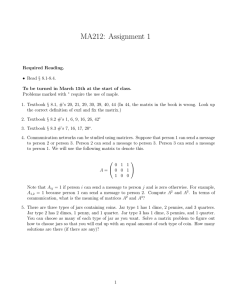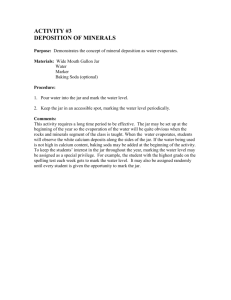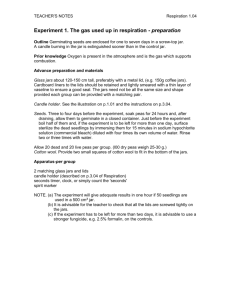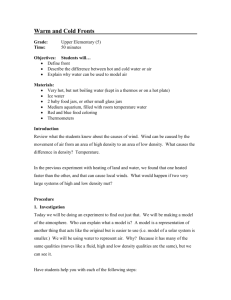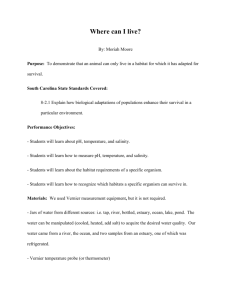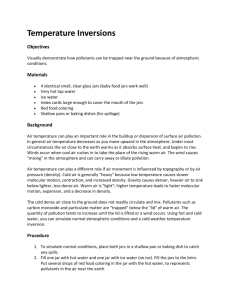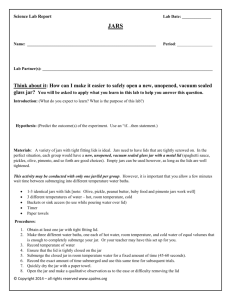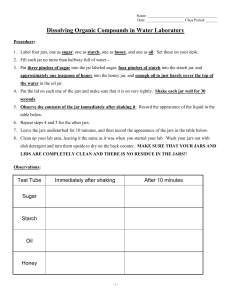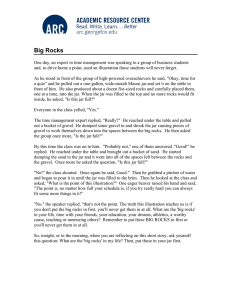Fish in a Jug Activity
advertisement
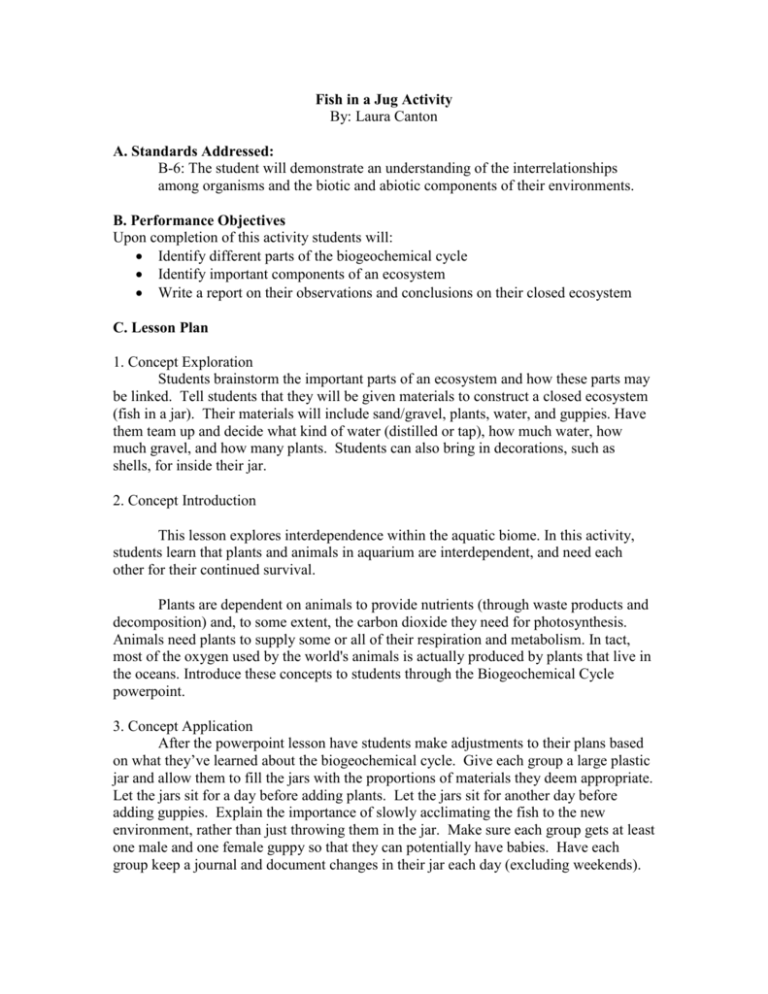
Fish in a Jug Activity By: Laura Canton A. Standards Addressed: B-6: The student will demonstrate an understanding of the interrelationships among organisms and the biotic and abiotic components of their environments. B. Performance Objectives Upon completion of this activity students will: Identify different parts of the biogeochemical cycle Identify important components of an ecosystem Write a report on their observations and conclusions on their closed ecosystem C. Lesson Plan 1. Concept Exploration Students brainstorm the important parts of an ecosystem and how these parts may be linked. Tell students that they will be given materials to construct a closed ecosystem (fish in a jar). Their materials will include sand/gravel, plants, water, and guppies. Have them team up and decide what kind of water (distilled or tap), how much water, how much gravel, and how many plants. Students can also bring in decorations, such as shells, for inside their jar. 2. Concept Introduction This lesson explores interdependence within the aquatic biome. In this activity, students learn that plants and animals in aquarium are interdependent, and need each other for their continued survival. Plants are dependent on animals to provide nutrients (through waste products and decomposition) and, to some extent, the carbon dioxide they need for photosynthesis. Animals need plants to supply some or all of their respiration and metabolism. In tact, most of the oxygen used by the world's animals is actually produced by plants that live in the oceans. Introduce these concepts to students through the Biogeochemical Cycle powerpoint. 3. Concept Application After the powerpoint lesson have students make adjustments to their plans based on what they’ve learned about the biogeochemical cycle. Give each group a large plastic jar and allow them to fill the jars with the proportions of materials they deem appropriate. Let the jars sit for a day before adding plants. Let the jars sit for another day before adding guppies. Explain the importance of slowly acclimating the fish to the new environment, rather than just throwing them in the jar. Make sure each group gets at least one male and one female guppy so that they can potentially have babies. Have each group keep a journal and document changes in their jar each day (excluding weekends). Observe jars for 28 days. NOTE: Once students place the lid on the jar, they may not open it for any reason, not even to remove dead fish! D. Evaluation Students will write a report on their observations and conclusions from their journal. It is important that students understand that they need to rationalize all of their choices for their jar including: The type of water The amount of gravel The level of water The number of plants The place in the room the jar was placed They must also discuss what happened to the fish and plants over the course of the project, and their conclusions (as it relates to the biogeochemical cycle) as to why what happened, happened!
